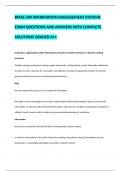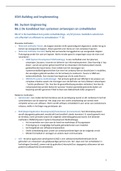Tentamen (uitwerkingen)
BMAL-590 INFORMATION MANAGEMENT SYSTEMS EXAM QUESTIONS AND ANSWERS WITH COMPLETE SOLUTIONS GRADED A++
- Vak
- Instelling
BMAL-590 INFORMATION MANAGEMENT SYSTEMS EXAM QUESTIONS AND ANSWERS WITH COMPLETE SOLUTIONS GRADED A++ In business, organizations utilize information primarily in problem-solving or in decision-making processes Problem-solving and decision-making require information. Gathering the correct inform...
[Meer zien]





